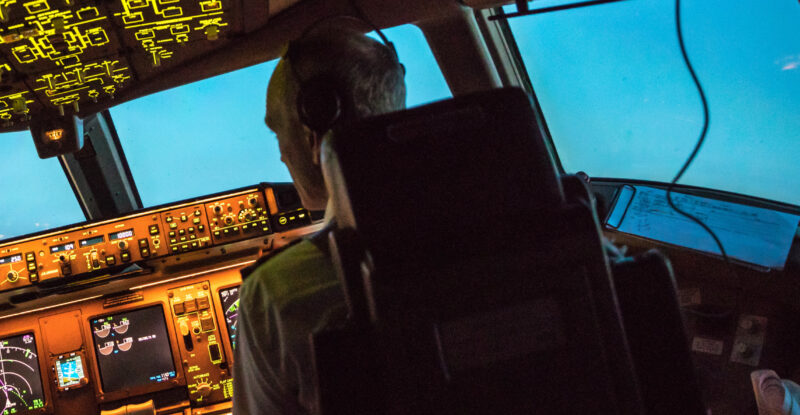Inmarsat is experiencing an outage of its I-4 F1 satellite that serves the Asia-Pacific region, creating a problem for aircraft operators, ships, the agricultural industry and others that rely on its satcom services including for critical communications.
“There has been a technical issue with Inmarsat’s I-4 F1 satellite, which provides L-band services in the Asia-Pacific region,” an Inmarsat spokesman confirms to Runway Girl Network.
“Recovery procedures to restore services have begun and during this process Inmarsat will be providing updates to partners and customers impacted.”
Inmarsat did not address RGN’s other questions, including whether the firm has been able to ascertain the cause of the outage; if there is any concern that a nefarious actor is involved; how many civil aircraft are affected; and when Inmarsat’s new I-6 F1 satellite will be ready to actively support cockpit comms and safety services in the Asia-Pacific region.
Specific to aero, Inmarsat’s fleet of L-band satellites enable air traffic controllers to stay in touch with pilots when aircraft are out of range of VHF, such as in oceanic airspace.
The London-based firm’s Classic Aero and SwiftBroadband-Safety (SB-S) services, transmitting via these satellites, support cockpit safety, voice and data, including ACARS and controller-pilot data link communications (CPDLC). Collins Aerospace and SITA act as service providers.
https://twitter.com/thebaldgeek/status/1647918690728542208
Issues with the I-4 F1 satellite started surfacing on 16 April. German satcom specialist m-cramer Satellitenservices told its clients on 17 April: “At approximately 22.50 UTC, Inmarsat experienced a full service outage on their Inmarsat I‑4 F1 satellite. Inmarsat are currently in the process of restoring services on other satellites within their fleet.”
In an update this morning, m-cramer states:
Inmarsat have advised that this is being treated as a top priority with key technical resources involved.
Due to the nature of the problem and the complexity of the recovery procedure, Inmarsat expect this to be an extended outage.
Inmarsat engineers have entered into recovery procedures to restore services on the Inmarsat I‑4 F1 Satellite, these procedures are ongoing. They anticipate reactivating the payload at approximately 14:00 UTC. This will be followed by a sequenced restoration of services beginning with Classic Aero.
We expect a further update from Inmarsat 18th April 2023 at 17:00 UTC.
Reports being shared by industry stakeholders and observers on social media suggest that operators have switched to HF (high frequency) voice, which is seen as somewhat of a dinosaur, but is nonetheless providing pipe redundancy at a crucial time.
Though Collins competes with SITA for airline business, Collins is the only service provider that, today, does HF. In 2019, the aerospace giant revealed to RGN that it plans to launch a next generation system.
“The wideband HF system is being designed to meet FANS communications requirements and digital HF voice communications with improved audio quality and ease-of-use over legacy HF,” it said at the time.
US-based satellite operator Iridium, meanwhile, is the only other satcom service approved for safety-critical transmissions in the cockpit, and competes with Inmarsat including for widebody satcom business.
It is presently preparing to start Future Air Navigation System (FANS) flight trials for its nextgen Certus service this fall, which will heighten its competitive proposition in the market.
Ensuring reliable communications with ground-based controllers on all major oceanic routes is incredibly important. Inmarsat’s I-6 F1 satellite, which successfully launched at the end of 2021, and its sister, the I-6 F2, which launched in February 2023, are expected to provide a continuation of Inmarsat’s critical L-band-supported aviation and maritime safety services. But Inmarsat did not provide an update on I-6 availability to RGN this morning.
Through the years, major aerospace giants have confided to RGN that they are eager for Iridium Certus-powered safety services to be available to ensure adequate choice in the market.
Moreover, they’ve expressed an interest in a dual-dissimilar approach — whereby both Inmarsat and Iridium L-band are exploited, allowing operators to potentially remove an HF system.
Given the current I-4 F1 satellite outage, the argument for dual-dissimilar satcom adoption has been strengthened. Indeed, an argument might also yet be made for a triple-redundant approach in aviation involving dual-dissimilar satcom plus nextgen HF. And as ever, the notion of using cabin connectivity (Ku/Ka-band) as a backup continues to be worthy of discussion.
Related Articles:
- Iridium prepares for new opportunity: longhaul narrowbody ops
- SITA sees more safety pipes in the future to relieve congestion
- Inmarsat eyes fresh capabilities as I-6 F1 satellite launches
- Wideband, digital HF a go for the cockpit: Collins Aerospace
- World stunned MH370 could vanish in 2014
Featured image credited to istock.com/Rathke











